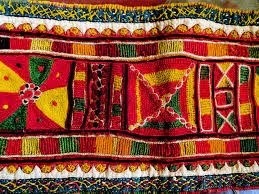Free Courses Sale ends Soon, Get It Now


Free Courses Sale ends Soon, Get It Now



Disclaimer: Copyright infringement not intended.
Context
Porgai Artisan Association Society, with 60 plus women, has been making and selling embroidered clothes to ensure that there is awareness about the art form and that it is passed onto the next generation.
Details
History of Tamil Lambadi Art
Characteristics of Tamil Lambadi Art
Significance of Tamil Lambadi Art
Notable Elements of Tamil Lambadi Art
Lambadi Language: A Nomadic Dialect
Lambadi Dance
Conclusion
Tamil Lambadi art continues to be a significant aspect of the cultural landscape in Tamil Nadu, serving as a testament to the rich cultural heritage and artistic traditions of the Lambadi community.
|
PRACTICE QUESTION Q. Which of the following statements about the Lambadi community in India is true? 1. Lambadi is a language spoken by the once nomadic Lambadi Banjara people across India. 2. Lambadi language is often written in the scripts of the regions where it is spoken. 3. Lambadi dance is a traditional form performed by Banjari women, often characterized by balancing metal pots on their heads. Options: a) Statement 1 and 2 are true. b) Statement 2 and 3 are true. c) Statement 1 and 3 are true. d) All three statements are true. Answer: d) |
© 2024 iasgyan. All right reserved